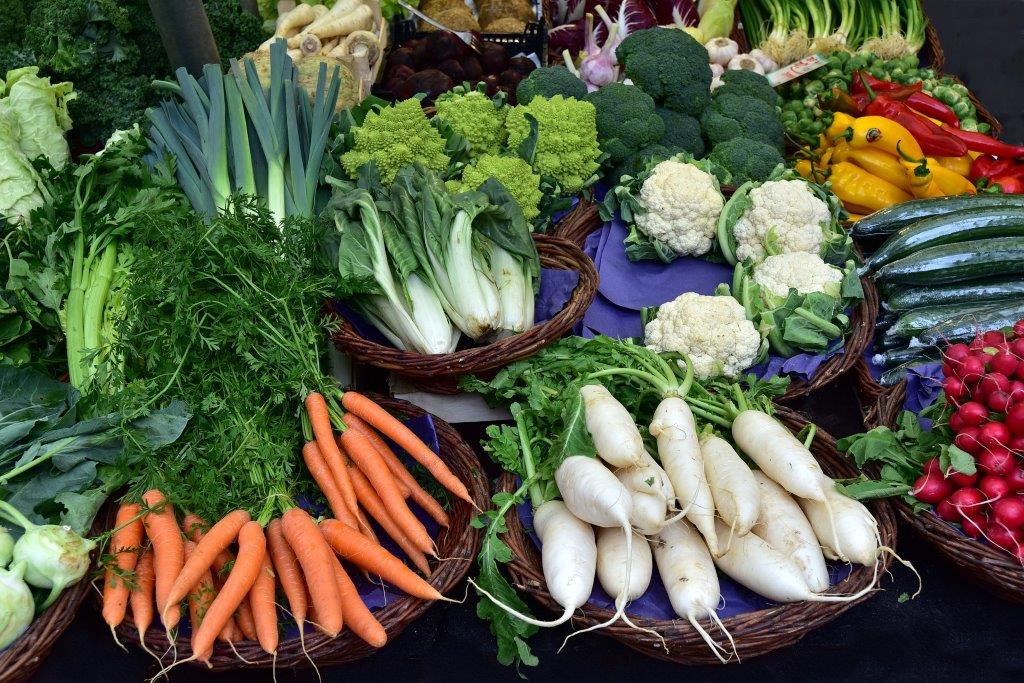
Eat Your Colors – A Diet to Protect Your Health
“Eat Your Colors” has become a mantra among health experts lately, but do you know what it means and why is it important?
Plants are made up of a multitude of components:
- Macronutrients: carbohydrates, protein, and fat
- Vitamins and minerals: A, C, E, K, potassium, copper, zinc, etc.
- Phytonutrients: plant compounds responsible for the plant’s color, taste, etc.
These phytonutrients not only give plants their distinctive colors (red, orange/yellow, blue/purple, green and white/tan) and taste (sulfurous, bitter, etc.), they have been shown to have positive health benefits for humans as well.
For example, lycopene gives red fruit its scarlet hue, and it helps improve human heart health. Glucosinolates are responsible for the sulfur-like odor and bitter taste of cruciferous vegetables like broccoli, kale, Brussels Sprouts, etc. It has an antibiotic-like effect in humans.
Scientists are continually researching how plant compounds benefit humans. Supplements may help, but it is still difficult to isolate which nutrient compound provides the benefit or if it is the interaction of several of them within the fruits and vegetables that protects us.
Kale is considered a “superfood” full of nutrients beneficial to the human body. But, if that’s the only vegetable you eat, you miss out on the other colors’ nutrient benefits. Plus, it can get pretty dull pretty quickly.
Eating a variety of fruits and vegetables regularly will help protect your body from disease. Challenge yourself to eat at least one serving from each of the 5 color groups every day.
Red Fruits and Vegetables
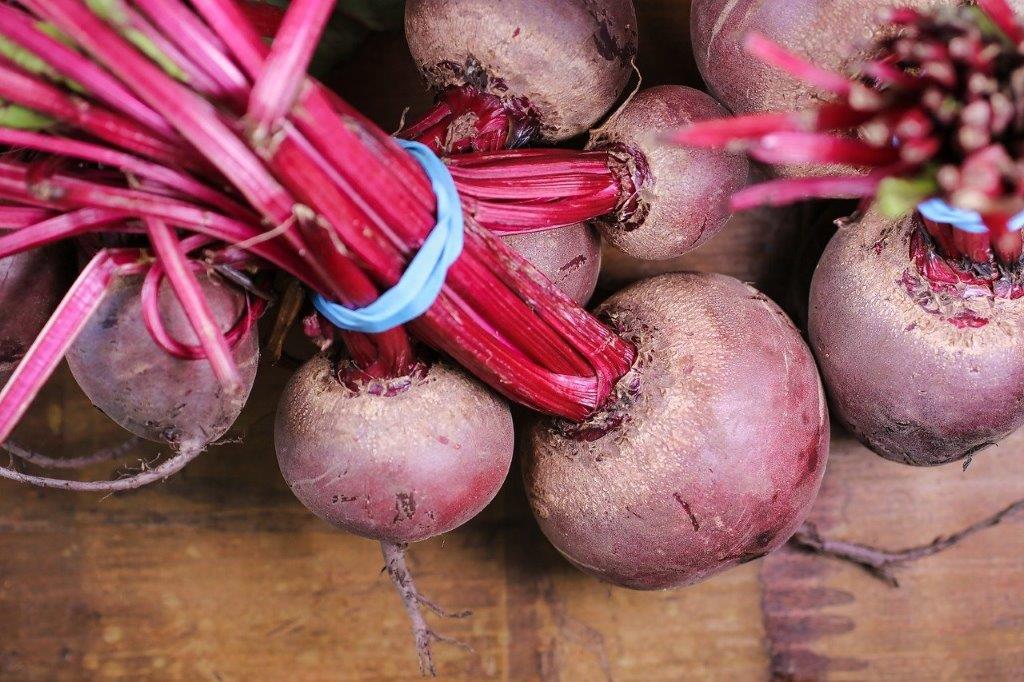

If I ask you to envision a heart, you probably pictured it red. This is a great way to remember that red fruits and vegetables are great for your heart.
The two most studied phytonutrients in red produce are lycopene and anthocyanins. Both of these substances reduce the risk of heart disease.
Additionally, lycopene has been shown to reduce the risk of prostate, breast, and skin cancers. (source) and to protect skin from UV damage (source). Anthocyanins act as antioxidants, neutralizing free radicals in our bodies that can damage cells and result in severe diseases such as cancer, heart disease, and diabetes. (source).
Red produce varieties are also good sources of:
- vitamins C and A, which boost the immune system and aid the health of eyes, skin, and nails
- potassium, which helps regulate blood pressure
Examples of Red Fruits and Vegetables
- beets
- blood oranges
- cherries
- cranberries
- edible red flowers (hibiscus, nasturtium, roses, etc.)
- guava
- pink grapefruit
- pomegranates
- radicchio
- radishes
- raspberries
- red apples
- red bell peppers
- red chili peppers
- red grapes
- red onions
- red pears
- red potatoes
- rhubarb
- strawberries
- tomatoes
- watermelon
Recipes for Red Fruits and Vegetables
- Apple Beet Carrot Juice
- Beet Hummus
- Bloody Berry Juice
- Chicken Watermelon Strawberry Salad
- Cranberry Pear Sauce
- Easy No Fuss Gazpacho
- Pico de Gallo
- Pomegranate Marinade
- Radish Fritters
- Sauteed Rosemary Beets
Eat Your Colors- Orange and Yellow Fruit and Vegetables
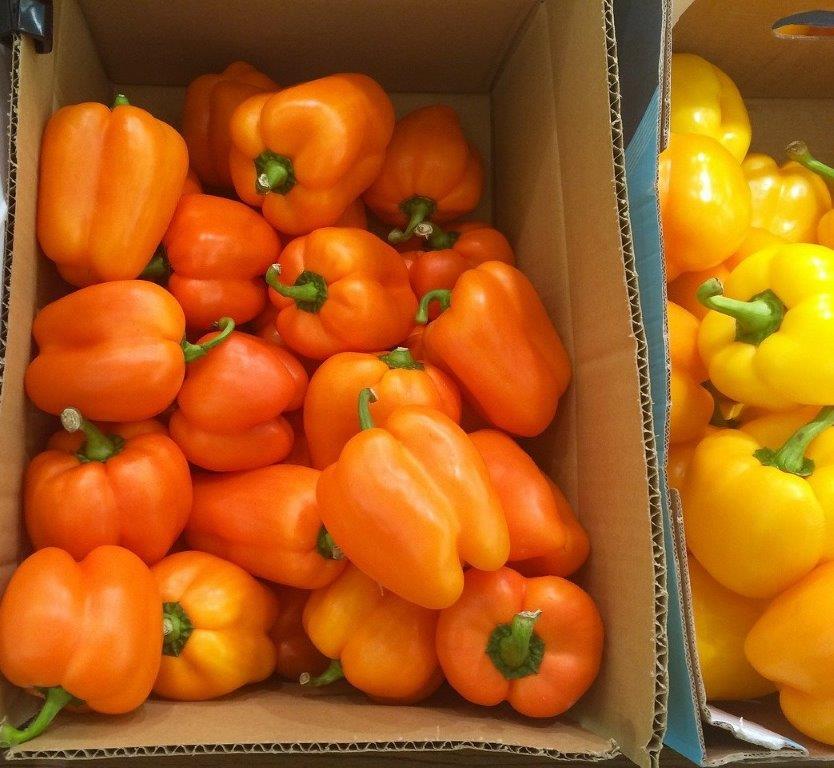

Orange and yellow fruit and vegetables are loaded with compounds that protect our eyes, nervous system, and heart.
Produce in the orange and yellow zone are usually high in vitamin C, folate, potassium, and fiber.
These fruits and vegetables get their color from carotenoids such as beta-carotene, zeaxanthin, and lutein.
Lutein and zeaxanthin have been well studied for their positive effects on eye health (source). Studies also show positive benefits on brain health (source) and protecting the skin from UV damage. (source)
Beta-carotene converts to vitamin A in the human body and is a powerful antioxidant. A 2016 review of scientific research concluded that the higher the beta carotene intake, the lower the mortality rate (source). Minimizing the effects of free radicals can help protect from chronic diseases such as cancer, heart disease, stroke, diabetes, and obesity.
Examples of Orange and Yellow Fruits and Vegetables
- apricots
- cantaloupe
- carrots
- corn
- grapefruit
- lemons
- mangoes
- nectarines
- oranges
- peaches
- persimmons
- pineapples
- rutabagas
- sweet potatoes
- tangerines
- yellow apples
- yellow beets
- yellow pears
- yellow peppers
- yellow summer squash
- yellow tomatoes
- yellow watermelon
- winter squash
Eat Your Colors Recipes for Yellow and Orange Fruits and Vegetables
- Apricot Peach Juice
- Carrot Kohlrabi Soup
- Carrot Quinoa Muffins
- Citrus Salsa
- Maple Cinnamon Winter Squash
- Ginger Pear Butternut Squash Soup
- Grapefruit Sorbet
- Grilled Corn, Tomato and Avocado Salad
- Persimmon Smoothie Bowl
- Sweet Potato Stuffed with Avocado
Green Vegetables and Fruit
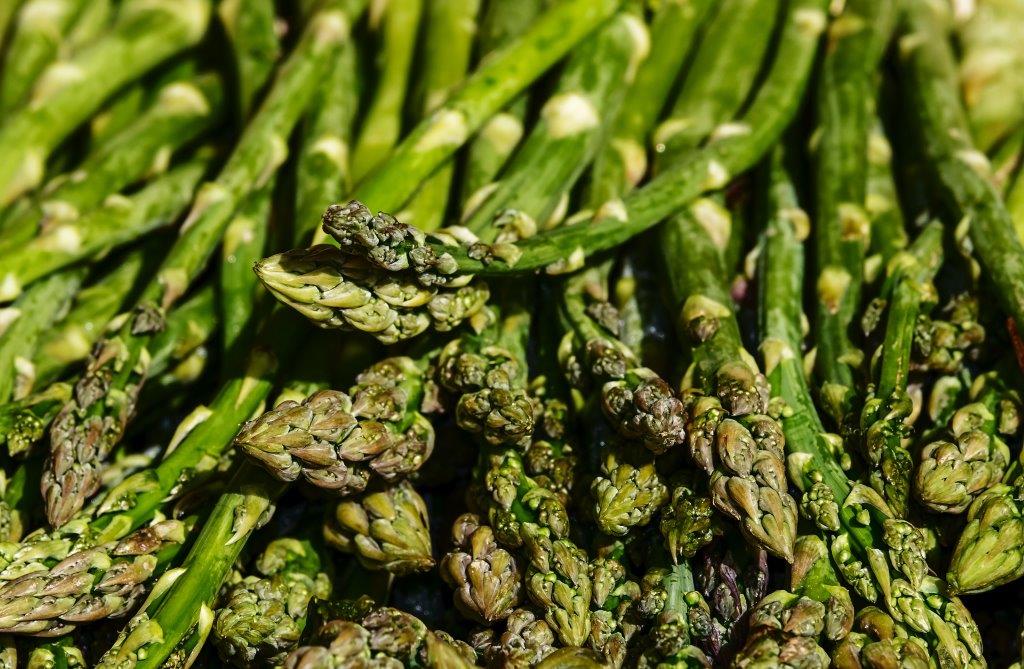

Dark green leafy vegetables, like kale, are the current darling of the nutrient world. And there is a good reason for it. Most green produce is high in fiber, folate, iron, calcium, and vitamins A, C, E, and K.
Green vegetables derive their color from an abundance of chlorophyll. Many also contain the carotenoids beta-carotene, lutein and zeaxanthin, also found in the orange/yellow group.
Chlorophyll has been used in modern medicine for more than 50 years. Studies have shown it is effective in treating and preventing cancer, healing wounds, and as an internal deodorant.
Examples of Green Fruits and Vegetables
- artichokes
- arugula
- asparagus
- avocados
- broccoli
- brussel sprouts
- celery
- cucumbers
- green apples
- green beans
- green cabbage
- green figs
- green grapes
- green onion
- green pears
- green peppers
- honeydew
- jujubes
- kiwifruit
- leafy greens
- leeks
- lettuce
- limes
- okra
- peas
- snow peas
- spinach
- zucchini and other green summer squash
Recipes for Green Fruits and Vegetables
- Arugula Pomegranate Salad
- Broccoli with Garlic Butter and Cashews
- Cock-A-Leekie Soup
- Creamy Chipotle Spinach Dip
- Green Beans Wrapped in Bacon
- Green Green Juice
- Keto Braised Celery
- Low Carb Creamed Spinach
- Maple Avocado Pie
- Swiss Chard with Onions and Vinegar
Blue and Purple Fruits and Vegetables
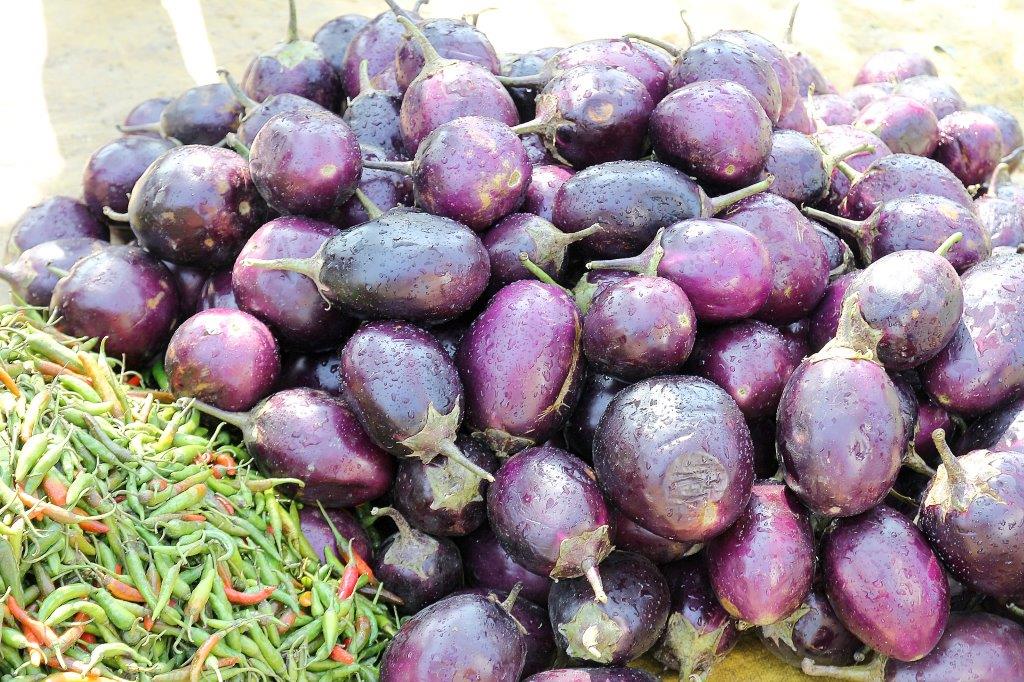

The blue and purple fruits and vegetables get their color from anthocyanins in the red group. These act as antioxidants, neutralizing free radicals in our bodies that can damage cells and result in severe diseases such as cancer, heart disease, and diabetes. (source). They may also reduce inflammation, lower blood sugar, and fight viruses.
Berries and grapes also contain resveratrol and quercetin, which have antioxidant and anti-inflammatory properties and are being studied in the prevention and treatment of a wide variety of illnesses, including cancer, Alzheimer’s Disease, and depression (source 1, source 2, source 3, source 4)
Examples of Blue and Purple Fruits and Vegetables
- black currants
- blackberries
- blueberries
- eggplant
- elderberries
- plums
- purple asparagus
- purple basil
- purple beans
- purple (red) cabbage
- purple carrots
- purple cauliflower
- purple figs
- purple grapes
- red/purple lettuces
- purple potatoes
Eat Your Colors Recipes for Blue and Purple Fruits and Vegetables
- Blueberry Vinaigrette
- Greek Eggplant Salsa
- Grilled Eggplant Roulades
- No Sugar Added Orange Blueberry Muffins
- No Sugar Added Plum Sauce
- Pickled Red Cabbage
- Plum Sorbet
- Powerful Purple Juice
- Ratatouille
- Summer Fruit Clafouti
White and Tan Fruits and Vegetables
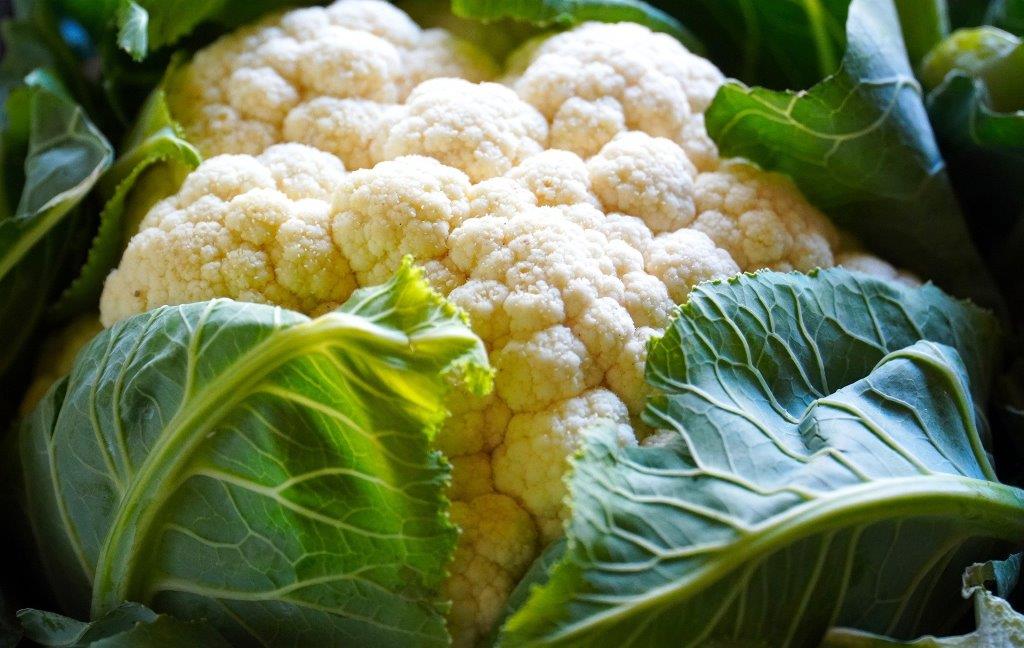

While “white” may not technically be on the rainbow color spectrum, it is still an essential category of fruit and vegetables and deserves a place on your plate.
They contain potassium, folate, vitamin C, the phytonutrient anthoxanthins (including quercetin mentioned in the blue/purple group), and allicin.
The anthoxanthins provide the white/ yellow color in the group. They can reduce stroke risk, lower blood pressure and cholesterol, protect against cancer, and ease asthma symptoms. (source).
Allicin is the sulfur-containing compound in garlic that protects the garlic plant. In humans, it has been shown to prevent heart disease (lower cholesterol, reduce hypertension, and platelet aggregation), prevent and possibly treat cancer, and as an antimicrobial compound, is both antibacterial and antiseptic (source).
Examples of White and Tan Fruits and Vegetables
- bananas
- brown pears
- cauliflower
- coconut
- fennel bulb
- garlic
- ginger
- Jerusalem artichoke
- jicama
- kohlrabi
- mushrooms
- onions
- parsnips
- potatoes
- shallots
- turnips
- white corn
- white nectarines
- white peaches
